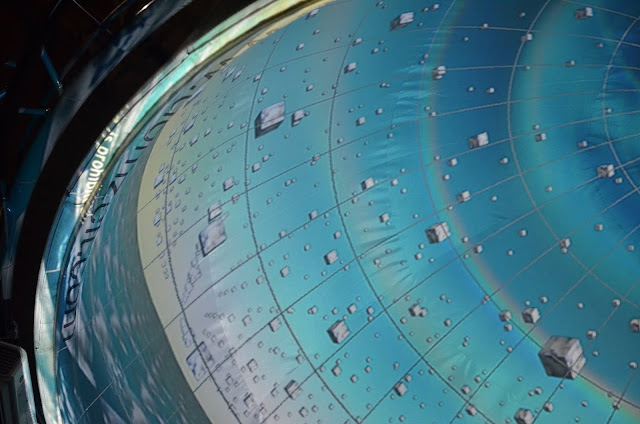GeoBox G-116 review
The benefits of the GeoBox G116.
At a price of about A$2500 ex GST, the GeoBox G116 is not necessarily cheap and it seems even more so, since it only has 1 processed HDMI output.
Actually,
this is not totally true, since the unit also has 1 x HDMI loop output, which
mirrors the HDMI input, but more about this later.
So, what do you get for the price and why would you use the product?
The feature list includes:
1 x HMDI 2.0,
1x Display Port 1.2 and
1 x VGA input.
It has a 17x17 control point for warp and Geometry alignment, increasing to over 30 points if the free-of-charge Gwarp 3 software is used.
It has creative video wall setting with Landscape and Portrait arrangement and provides PiP/ PoP capabilities. Functions such as Image rotation and flip to 90/180 and 270 degrees are also included as are image split.
With an input capability of 8K/1K at 3o fps or 4K/60 4:4:4 the unit can work well within any modern display set-up.
But again, what do we use such a unit for.
One application is simple, it can be used as a cascade unit for other GeoBox units in videowall applications, expanding the number of outputs.
G-116 is ideal to be coupled with projectors, which do not have any warping and geometric alignment features.
Furthermore, there is the PiP or PoP function, which allows the insert of a second image at any flexible position.
G-116 can also be used to control the brightness of the projector.
G-116 can be RS232 or IR controlled and also has TCP/IP access, integration into more complex systems is easy.
G-116 will able to enable a cheaper projector with warping and geometric alignment, such as keystone, pincushioning or barrel adjustments (or distortion if required). These features are usually not build-in to these type of projectors.
The unit can be used to calibrate a single projector to an immersive curved screen or even a dome.
In a gallery or museum set-up, maybe even retail, mapping onto objects can be made easy with the wider adjustment capabilities.
Content
selection and switching is another application. It is possible to switch between the three inputs, expanding the capabilities of the projector or digital display.
By the way, what use does the loop output have?
First, we can use it as a duplicate for the HDMI input. The signal can be routed to a control monitor or another display. The Loop output further functions as the output for cascading to other units.
The loop output could be used for some creative projection set-up, whereby the screen is in between two projectors. The scalability of the processed output allows for interesting image effects.
I think the options are plentiful and once you have the unit, you will discover many usages for it.
Considering all this, the price is more then reasonable in particular that this unit can be used, even after the projector or video display has been exchanged.


No comments:
Post a Comment